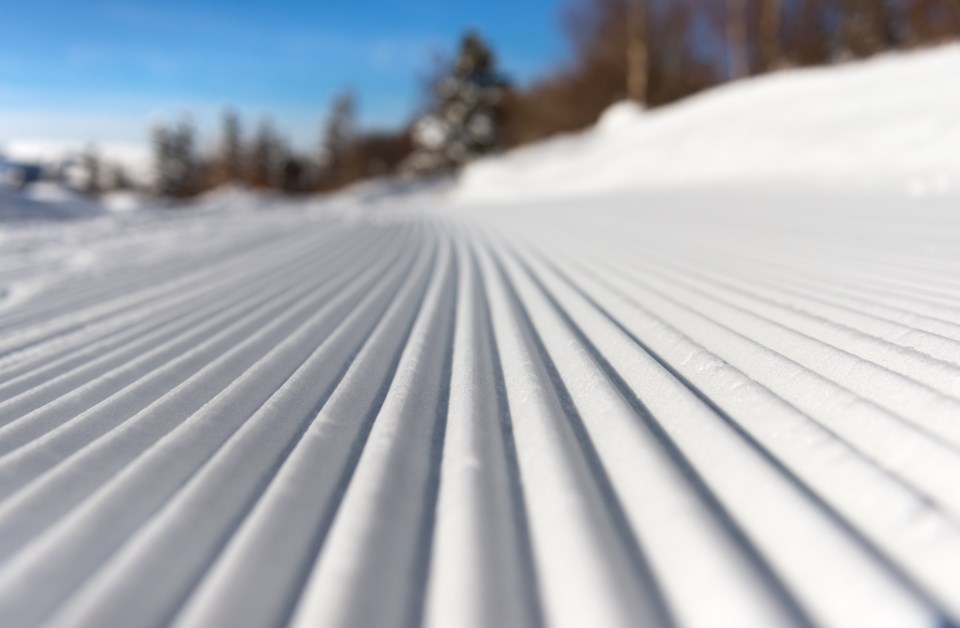In the halcyon days of the mid-‘90s, when I was managing editor at Powder magazine, still de facto voice of the “core” ski community (both Freeskier and Freeze would appear in 1997), a main task was coming up with ways to lampoon the industry’s sacred cows, from ski tests to nacho plates to fashion to, naturally, resorts—something readers expected and we did with élan. The two places most in our crosshairs at the time were perceived as dull bastions of corporatized mainstream skiing and corduroy-based deliverance: Vail, CO., and Deer Valley, Utah.
No thought was given to whether this assessment was fair; after all, “Vail Sucks” bumper stickers, then ubiquitous in ski country and manufactured and distributed by rival Coloradan skiers in Aspen, long preceded my tenure at the magazine. We were merely leveraging a long-running trope—that skiing was all about unbridled adventure, and places known mostly for groomed runs and strict boundary policies were anathema to this idea.
But after a few years of travel for stories and industry events that saw me visit dozens of ski areas, including Vail, I had a chance to re-evaluate. At least one thing was clear: Vail didn’t really suck.
As the continent’s fourth-largest resort, Vail was fine. Good even. If you avoided weekends, it was big, spacious, and you could have a ton of fun. There was plenty of variety save for the expert kind, but that wasn’t its market. It hosted foreign visitors, local aficionados and events like the World Ski Championships and U.S. Open of Freeskiing with distinction. It wasn’t the best (Whistler!) but definitely nowhere near the worst. Sure, its famed Back Bowls didn’t live up to their legendary status (a sentiment from a more innocent time in skiing), but it was hard to say whether it was the fault of the resort’s PR team or over-eager media (Powder exempted). Though perhaps overhyped for the time, it was most certainly over-vilified. I had some memorable times—and skiing—in Vail.
Deer Valley, on the other hand, remained an amusing other, a boutique beast to be poked for editorial laughs. I’d never been, never had reason to, and, in those pre-internet days, knew only what I’d heard about—a warren of elitism, ski valets and gently sculpted groomers for rich folks. Whenever I was in Utah on Powder business, I’d find myself in Little or Big Cottonwood Canyon bro-ing down with athletes and photographers. I wasn’t even sure where Deer Valley was. So, better late than never, last year I found out.
Anyone who has skied Deer Valley knows it’s different. A unique, ski-only experience (one of only two places in the U.S. where snowboards aren’t allowed) where a customer cap and pod-style lift plan efficiently spread skiers out to obviate the massive lift-line chokepoints seen at most other large ski areas. A place where grooming takes on the mien of sculptural perfection and an unparalleled customer-service vibe spills over to fellow skiers, who smile a lot and hold doors for you—completely counter the dog-eat-dog feel of most large ski areas, where folks hustle to pass you at every (literal) turn.
For Deer Valley’s visionaries—Edgar Stern and the great Norwegian ski-god Stein Eriksen—this was the plan from its 1981 outset: skiing as it should be; skiing as you wish it was. It seems I was finally old enough—and had skied enough post-pandemic shouldn’t-be-and-wish-it-wasn’t—to appreciate that. I immediately loved it. Having zero previous knowledge of this long-inculcated legacy, it was also interesting to discover it was about to triple its terrain from 2,026 acres to 5,726; from 103 runs to 238; from 21 lifts to 37; and an entirely new base access and accommodation to be called East Village. It will be the largest increase of skiable acreage in recent North American history, vaulting the resort into the company of the continent’s largest and elevating it for future generations.
But hey, this place has already been around a couple of generations and inculcated itself into North American ski life. Like Vail, it’s part of a much bigger picture we’re all connected to, something I realized as I sat in an on-hill bar called The Sticky Wicket.
As expected in such places, the walls were covered in ski memorabilia such as posters, photos, skis, license plates, trail signs and even covers of Powder—the very magazine that once made fun of it. History advises us to keep the past in the present, but where does the past begin and the present end? I crossed that threshold by knowing all the skis on the wall because I’d either owned them or someone I knew did; by knowing not only where all the photos were taken by location, but also the photographer and athletes because many of both counted among my friends. Classic shots of JP Auclair and Henrik Windstedt in Åre, Sweden, by Mattias Fredriksson, with whom I’ve travelled the world. A shot of another frequent travel companion, Mike Douglas, on the Blackcomb Glacier by my late disc-golf buddy Bruce Rowles. Tanner Hall, who I’d first met as a teenager at the erstwhile Extremely Canadian Lodge in Whistler, soaring over the infamous Chad’s Gap in Alta, Utah, by Brent Benson. And a scheisse-ton of skiers in Verbier, Switzerland, by Marko Shapiro.
These photos, these skis, these people all meant something from the past that was relevant to today—and as relevant to the place where I saw them as to where they were taken. We were, I realized, always living history, and needed to respect it. Sure, every ski area has its quirks to make fun of, but the real fun is that it’s all skiing.




